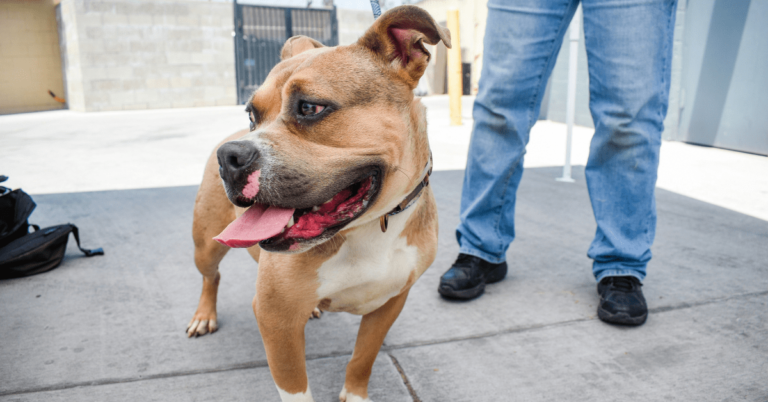5 Things You Didn’t Know About External Pet ID


Pet ID tags seem pretty simple, right?
- You buy one.
- You put it on your pet’s collar.
- Lost pets find their way home as quickly and safely as possible.
Well, here’s the catch: you actually have to put the pet ID tag on your pet. Believe it or not, in a study done by the ASPCA (American Society for the Prevention of Cruelty to Animals), a vet clinic handed out free tags to their clients; when the clinic followed up with them 6-8 weeks later, they found that some of them still hadn’t put the tag on their pet (and weren’t ever planning to)! In fact, while 80 percent of pet owners claim it is important for pets to wear ID tags, only 33 percent said they always have ID tags on their pets.
Since a pet ID tag is visible to the finder, it is the pet’s first line of defense and is usually the quickest way the pet makes it back home.
Dr. Emily Weiss’ article titled, “Frequency of Lost Dogs and Cats in the United States and the Methods Used to Locate Them,” also did a case study of lost pets. It found that only 67 out of 110 lost dogs were wearing ID tags, and 15 dogs (out of the 101 that were recovered) were found through their tag. Worse, only 18 out of 74 lost cats were wearing tags, and one cat (out of the 55 that were recovered) was found through its tag.
These types of statistics make you wonder: would pet reunification numbers improve if more dogs and cats wore ID tags at all times? (Hint: the answer is yes.) Since an ID tag is visible to the finder, it is the pet’s first line of defense and is usually the quickest way the pet makes it back home. Simply put, it would be a valuable approach to reuniting more lost pets with their owners. But beyond even these obvious reasons, you might be surprised at the different things that an ID tag can (and can’t!) accomplish. Get ready to pick up some new facts about ID tags, starting with #1 below…
1. Think you don’t need a pet ID tag? Think again.
If you’re a responsible pet owner, your pet is probably licensed in the city you live in and wears a little silver license tag on his/her collar. Good job! But wait – does this mean your pet still needs a separate ID tag? Yes! Even if your pet already wears a license tag, you still need an ID tag that at least lists your pet’s name and a phone number. Trust us, the ID tag will get your pet home faster than the license tag will.
And if you own a cat – this one’s especially for you. Many cat owners don’t think they need a tag, since their cat is “indoors only” and “won’t roam far.” We say: you never know might happen, so putting a tag on your cat may be the best decision you make.
2. There may be certain things you DON’T want on your pet’s tag.
Anybody can see on a pet ID tag, so it’s probably not a good idea to put your home address on it (or anything that you would consider “private information”), in case it falls into the wrong hands. Even more surprisingly, you may not want to put your pet’s microchip number on the tag. Why? While it’s helpful when someone wants to return your found pet, it also makes it easy for someone who wants to steal your pet and register the microchip number under their name. Remember, anyone can register any brand of microchip in any U.S. registry, and, unfortunately, U.S. registries are not required to share information. So, even if you have your pet’s microchip registered in one registry, it is still possible for anyone to register the same number in any other registry that exists out there.
3. There are several things that your pet’s tag can’t do.
For example, your pet’s ID tag is not a cat or dog GPS. You cannot “locate” your pet through the tag. It is also not a QR code. Unless the tag includes a barcode of some sort, you cannot scan it to pull up owner information. Lastly, it is not a form of permanent ID, such as a microchip. Tags can fall off and are easily removed. A registered microchip is the best backup in case this happens, since it is permanently imbedded in your pet’s skin, and will link to your contact information if searched in a database.
4. Tags can be made of any material.
Metal? Psh, that’s old news. There are so many different styles of tags nowadays, including rubber ones (if you want something a little quieter), ones made out of a reflective material (to make the pet more visible at night) and even ones that light up (just for fun). You can also attach a bell to your pet’s ID tag or collar so that it jingles and makes their location easier to pinpoint in the house or around the neighborhood.
5. External pet ID isn’t just limited to tags.
There are many ways to identify a pet, and an ID tag is just one of them. You can also put a customized collar (or leash) on your pet, with his/her name on it. There are special vests that are specific for guide dogs and dogs-in-training. Or if your dog is sensitive and in need of space in public, you can simply tie a yellow ribbon around his/her neck, collar or leash, and for those who have heard of the yellow ribbon campaign, they’ll know to give your pet plenty of respectful space when passing by.
The Michelson Found Animals Foundation’s mission of saving pets and enriching lives is made possible by the generous contributions of Dr. Gary Michelson and Alya Michelson.



